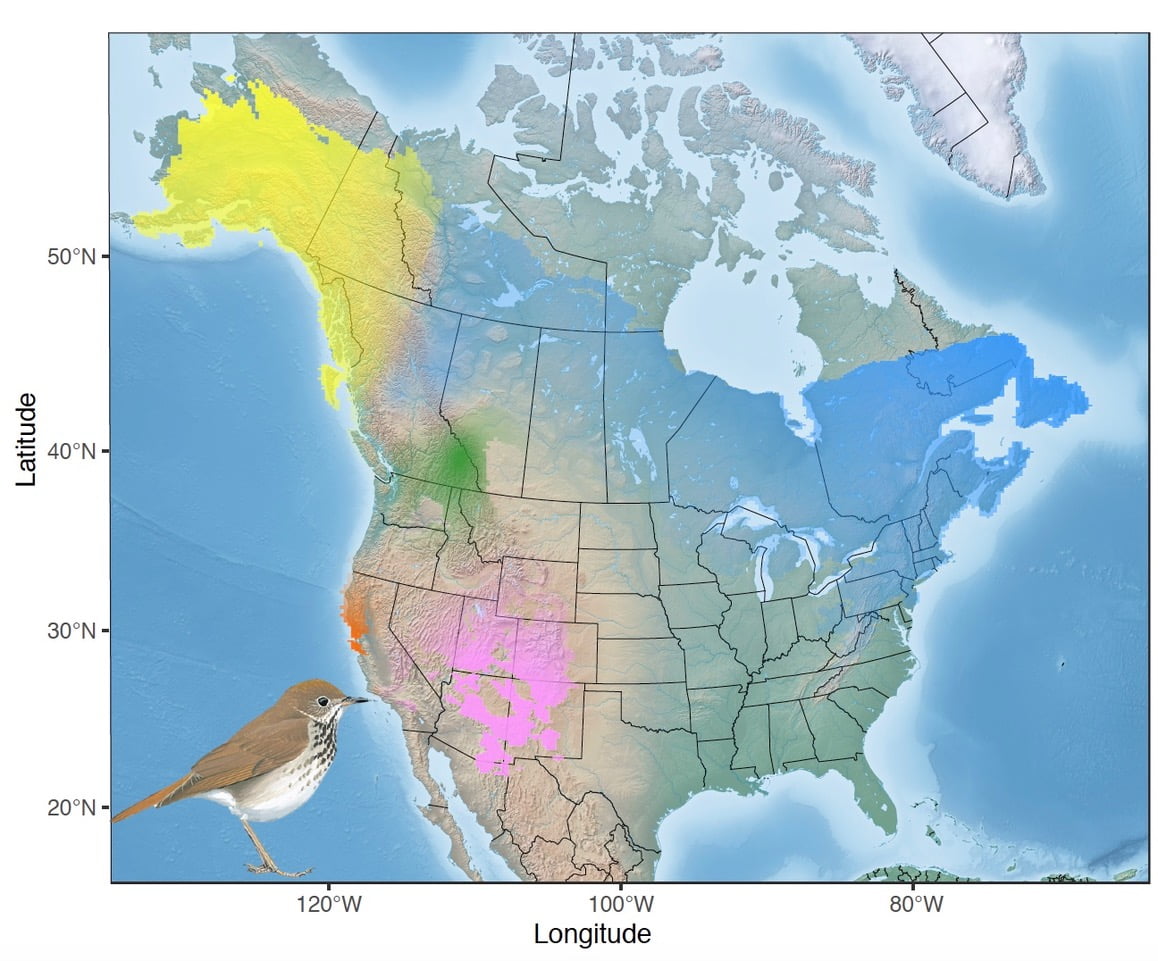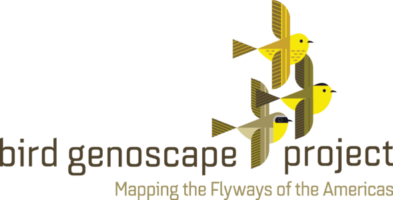Hermit Thrush
The Hermit Thrush (Catharus guttatus) is well-known for its ethereal, flute-like song resonating through the forests of North America each breeding season. The reclusive behavior suggested by its name has not prevented the Hermit Thrush from becoming an increasingly popular study species, having recently been the focus of multiple geolocator studies (see below). These external tracking devices have been productive for establishing migratory connectivity for specific populations, especially throughout western North America. To fill in the gaps across the entire range of the Hermit Thrush and to better understand the broad-scale connectivity patterns of populations throughout all of North America, we have initiated a collaborative effort to integrate our fine-scale genomic techniques.
We have teamed up with multiple collaborators (see below) to construct a genoscape for the Hermit Thrush. Due to the tremendous help of many people and groups, we have obtained blood and feather samples from across the continent to reveal the existence of 5 genetically distinct populations of Hermit Thrush – Pacific Northwest (yellow), Pacific Central (green), Eastern Taiga (blue), Pacific South (orange), and Interior West (pink). Furthermore, we are also investigating the evolutionary history of this species using genetics and morphometrics (see below).

The five genetically distinct populations of Hermit Thrush (Catharus guttatus) across the breeding range: Pacific Northwest (yellow), Pacific Central (green), Eastern Taiga (blue), Pacific South (orange, and Interior West (pink). Genetic clusters are visualized as transparency levels of different colors overlaid overlaid upon a base map from Natural Earth (naturalearthdata.com) and clipped to the species breeding range using an eBird shapefile. See below for details of samples used. Hermit Thrush Image by © Birds of the World
Tracking studies: Allison Alvarado, for her dissertation research at UCLA, tracked divergent migratory routes of breeding populations from both sides of a migratory divide in British Columbia. Allison Nelson, for her master’s thesis at San Francisco State University, used geolocators to identify the breeding origin of Hermit Thrushes over-wintering in the San Francisco Bay Area and the wintering locations of Hermit Thrushes breeding in the Santa Cruz Mountains. Researchers from Denali National Park have deployed geolocators on breeding Hermit Thrushes from interior Alaska (read more here).
Evolutionary studies: Allison Alvarado is continuing her research on the Hermit Thrush migratory divide and hybrid zone dynamics in British Columbia. She is interested in the role of climate on subspecies variation and the process of speciation at a broad geographic scale. Allison Nelson is currently studying Hermit Thrushes from the Alexander Archipelago of Alaska and the Sierra Foothills of California, and is interested in population structure at a fine geographic scale.
Bird Migration Explorer: Click here to see how Audubon’s Bird Migration Explorer has incorporated our Hermit Thrush genoscape into their base map.
Publications:
Adams N, Dias T, Skeen HR, Pegan T, Willard DE, Winger B, Ruegg K, Weeks BC, and Bay R. 2025. Genetic and morphological shifts associated with climate change in a migratory bird. BMC Biology 23, 3.
Alvarado AH, Bossu CM, Harrigan RJ, Bay RA, Nelson ARP, Smith TB, and KC Ruegg. Genotype-environment associations across spatial scales reveal the importance of putative adaptive genetic variation in divergence. Evolutionary Applications 00: 1-18.
Utilized Hermit Thrush Samples
Explore the map below to see when, where, and who collected the samples to build this genoscape.
